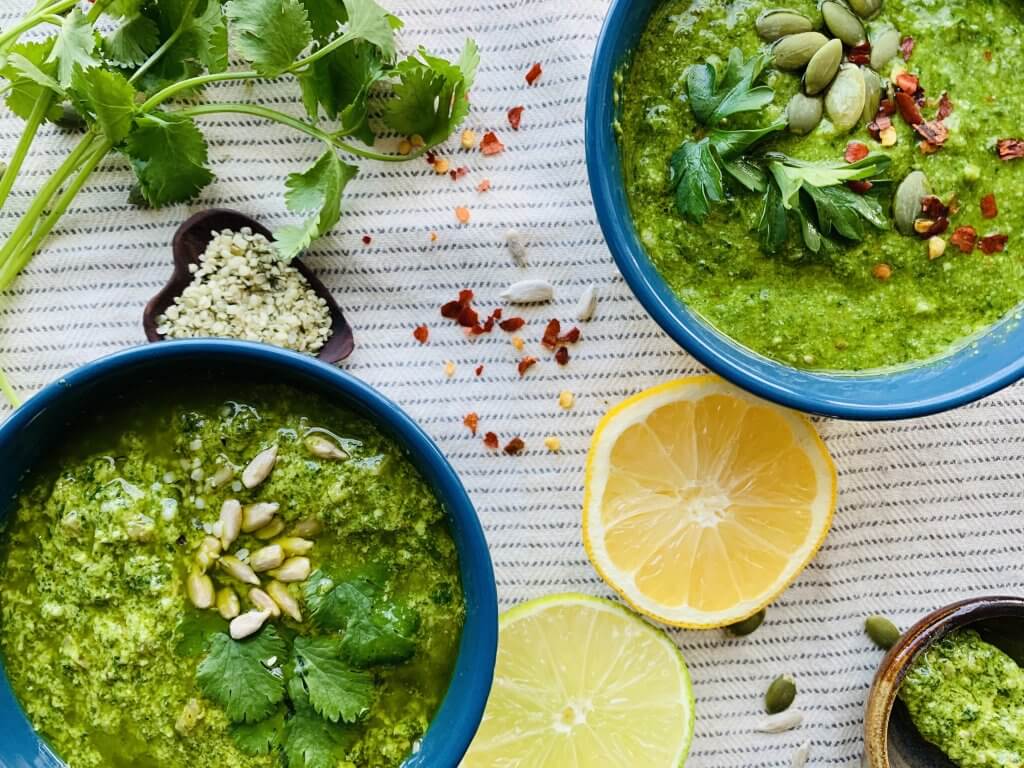Spring is in the air, and with it one of the most popular practices of the season: detoxing. Widely embraced by integrative and functional medicine, Holistic Nutritionists, Ayurvedic and Chinese medicine practitioners, detoxing is still a practice met with skepticism by many in the scientific community.
Much of the debate surrounding detoxification as an efficient process—where a person can aid her/his body to get rid of toxins by following a specific dietary and supplement guideline—is understandable, as studies in this field need to be more robust. However, there is no denying that nutrition, genetic makeup, lifestyle, and environmental factors can enhance or diminish its efficacy.
We all understand that detoxification is a natural body activity without which there will be no life. Yet, our modern world exposes us to more toxins and harmful chemicals than ever before. Think of the average ingredient list for deodorants, shampoos, makeup, or frozen pizza. Is it possible that we can assist our body in this process? Studies are mounting to prove so.
Detoxing is an intricate biochemical process divided in two phases. Phase I, where cytochrome P450 enzymes transform lipid-based toxins into less harmful compounds, takes place mainly in your liver, but these enzymes can also be found in your enterocytes (absorption cells found in your intestines), kidneys, lungs, and even brain. In Phase II or Conjugation, the goal is to increase the absorption of the metabolite so it can be discharged via urine or bile.
Nutrients act like cofactors in this task, and the ability of the body to detoxify expeditiously can be affected by nutrition. Think of B vitamins, zinc, selenium, vitamin C, vitamin A, and amino acids. When it comes to food, there has been an association between certain nutrients and the activation or inhibition of enzymes in the pathways of detoxification. Some foods enhance one phase more than the other, or they can generally provide the crucial fibre necessary to bind to toxins and eliminate them via stool.
Detoxification protocols can come in many forms and shapes, from heavy metal protocols, to targeting detoxification pathways, which can include food, environmental, and lifestyle recommendations. Others can focus on removing and replacing certain foods; this should only be done for a specific period of time, and always considering your own particular body, lifestyle, and mental health needs.
If you are focusing on whole foods, great quality produce, foods with a rich antioxidant profile, and drinking the best quality water you can get your hands on, you are already doing a great job in assisting your body with its natural detoxification process. One top detox food is fibre. Fibre doesn’t only support detoxification, but it has also been linked with an increase in the production of short chain fatty acids (SCFAs), microbial metabolites that have been linked to anti-inflammatory and anti-cancer properties. Butyrate, perhaps the most well-known, has been associated with strengthening the gut barrier function as it is the main fuel for the cells that line the gut, as well as promoting the growth of villi.
Top detox foods – What to include during a detox
Cruciferous vegetables
- broccoli, cauliflower, Brussels sprouts, cabbage
- Linked to inducing Phase I and Phase II detoxification. Rich in glucosinolates (neutralize carcinogens) and indole-3-carbinol (studies show prevent development of estrogen-enhanced cancers).
Allium vegetables
- garlic, onion, leeks, scallions
- Linked to aid Phase II detoxification due to their organosulfur compounds.
Berries
- strawberries, blueberries
- A great source of ellagic acid, a powerful antioxidant linked to anti-inflammatory properties.
Cilantro
- powerful antibacterial, antioxidant, and antifungal
- Known to help the body get rid of heavy metals such as mercury and lead, and aid in Phase II detoxification pathways. It has also been shown to help purify water.

Cilantro Pesto
- 1 bunch cilantro
- 1 clove garlic
- 3 tbsp sunflower seeds
- 3 tbsp walnuts
- ¼ cup nutritional yeast
- 1/8 cup sea salt
- 1 ½ tbsp lemon juice
- 1 tbsp water
- ¼ cup extra virgin olive oil
- Add all ingredients except olive oil to a food processor.
- With the food processor running, slowly pour in the olive oil. Continue to blend for 30 seconds until pesto is smooth and emulsified. Season with additional salt or lemon juice, if needed.
- Transfer to a jar and enjoy! (It keeps in the fridge for about a week.)
Sassy Parsley & Ginger Pesto
- 3 cups parsley
- 1 cup basil
- ½ cup sunflower and pumpkin seed mix
- 2-inch piece of ginger, peeled
- ½ cup olive oil
- 2 tbsp water
- ½ tsp chili flakes
- salt to taste
- juice from half a lemon
- Mix all ingredients in a high-speed blender and enjoy the freshness and brightness of this sauce. (It keeps in the fridge for about a week.)
Laura Spencer is one of Nature’s Fare Markets’ vitamin specialists and a passionate foodie. She believes we can be as happy, healthier, and fulfilled as we allow ourselves to be. As a certified Holistic Nutritional Consultant, she works with people to help them achieve a healthy lifestyle by focusing on modifying behaviours and eating habits that are not working.
@bonfirenutrition | bonfirenutrition.ca
Article was published in The Good Life magazine.
